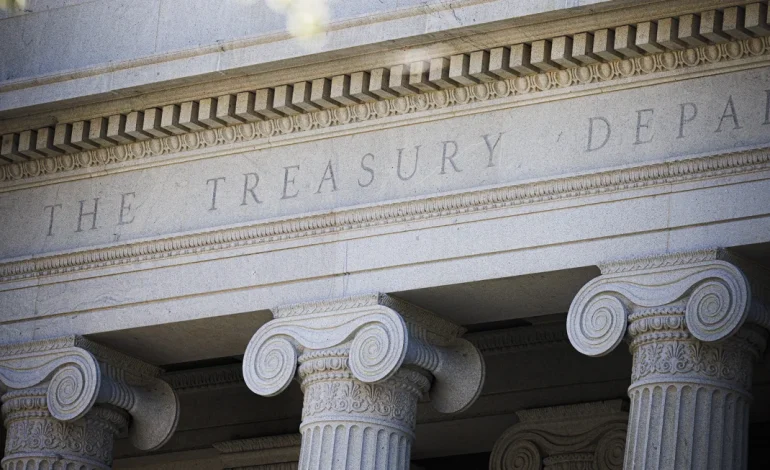The 10-year US Treasury yield moved higher on Friday as the bond market sell-off resumed, driven by uncertainty over President Donald Trump’s shifting tariff policies.
While a brief tariff reprieve earlier in the week provided some relief, escalating trade tensions with China have renewed concerns among investors.
As of 4:45 a.m. ET on Friday, the yield on the 10-year Treasury note rose over 2 basis points to 4.416%. Meanwhile, the 2-year Treasury yield dropped by more than 3 basis points to 3.809%.
Yields move inversely to bond prices, meaning that as investors sell off Treasury securities, their yields rise. This week’s fluctuations reflect the market’s sensitivity to trade policy shifts and broader concerns about economic stability.
Investors have closely monitored trade developments as Trump’s tariff policies have evolved throughout the week. On Wednesday, the administration announced a 90-day reprieve for most countries, reducing duties to a universal rate of 10%. However, China was excluded from the reprieve, and US tariffs on Chinese imports increased to 145%. In response, China raised its own tariffs on American goods from 84% to 125%.
This escalation has contributed to renewed volatility in financial markets. US Treasuries, typically considered a safe haven asset, saw an earlier sell-off amid concerns about a prolonged trade conflict. After stabilizing following the tariff pause, selling resumed as tensions with China intensified.
According to Deutsche Bank analysts, investor sentiment remains fragile, with US-China trade relations overshadowing other developments.
“The main driver of the renewed market pressure was an increased focus on the US-China escalation,” analysts stated in a note. “The market reaction showed an increased sensitivity to the risks of a disorderly economic decoupling between the world’s two largest economies.”
Concerns over the stability of US government debt have also emerged. The US government relies on selling bonds to fund its national debt, and a decline in investor confidence could lead to higher borrowing costs across the economy, impacting everything from mortgage rates to corporate lending.
The rapid sell-off in Treasuries has drawn attention to potential long-term risks. Analysts note that the bond market is often overshadowed by stock market movements, but its influence on economic policy is significant.
“This time, there was no recession or external shock—just a self-imposed trade policy threatening global financial stability,” said Gennadiy Goldberg, a rates strategist at TD Securities.
While previous concerns from Wall Street and lawmakers had not swayed Trump’s stance on tariffs, market instability appears to have played a role in his recent policy adjustments.










The latest news in your social feeds
Subscribe to our social media platforms to stay tuned